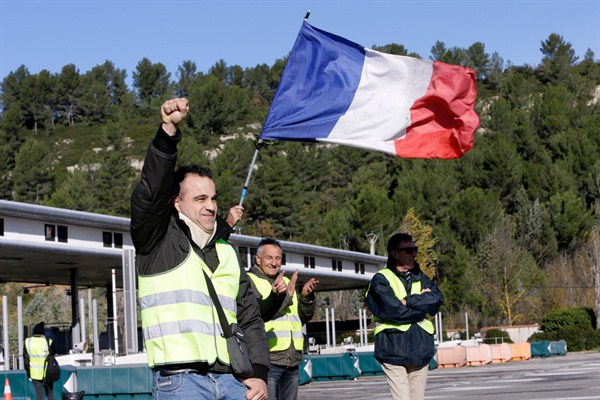PARIS—What to make of the Yellow Vests? For a third week in a row, they continue to dominate the news. Televised scenes of pitched street battles between protesters and police on Saturday raised alarm about an “insurrectional atmosphere” unseen in France since May 1968. Reports suggested that French President Emmanuel Macron might declare a state of emergency in response.
Instead, in his first sign of retreat since taking office in May 2017, Macron agreed yesterday to suspend the planned fuel tax hike that served as the catalyst for the popular mobilizations that have transfixed, if not exactly paralyzed, the country.
Many pixels have been devoted to the movement’s blurry origins, its inchoate and amorphous structure, its lack of leaders and representatives, and its strange combination of demands that range from the issue-specific revolt against the gas tax hike to broad condemnations of social inequality and Macron himself. And yet, for all that, most observers—including, it seems, Macron and the government of his prime minister, Edouard Philippe—continue to grope for answers to basic questions about the Yellow Vests, or Gilets Jaunes, as they are known here.

